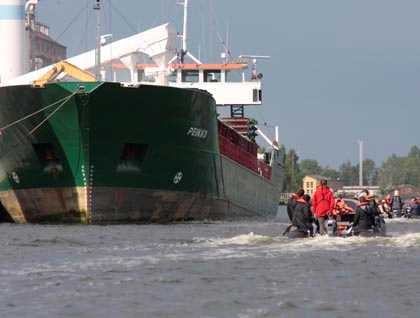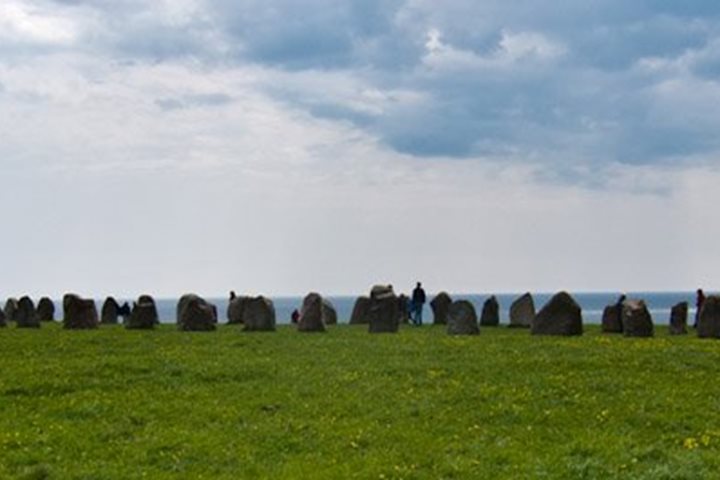As a special guest, ex-President Lech Walesa arrived early this morning to deliver a talk in the lounge. He was pivotal in organising shipyard workers into a cohesive force in the 1980s and establishing the now famous Solidarity Movement as an effective political party. He became President of Poland in 1995 and was also awarded the Nobel Peace Prize. Charming and effervescent, his hour-long talk was a captivating personal insight. Following questions and photos we boarded our coaches and headed into Old Town Gdansk, passing on the way the Solidarity Monument which is sited near Gate 2 of the shipyards. This commemorates some forty workers who were killed in strikes and riots in 1970. It has become a place of pilgrimage and numerous bouquets of flowers add splashes of colour to the dark metal and concrete of the memorial. Close by is the Roads to Freedom Museum which charts and details the turbulent rise of the shipyard workers against the erstwhile Communist regime.
Visiting Old Town Gadansk today one finds it difficult to believe that the city was almost entirely levelled by bombing towards the end of the Second World War. Fuelled by nationalistic pride in their heritage, the centre was lovingly restored from old photographs and other records and now ranks as one of the prettiest cities in the entire Baltic. The merchants houses were reconstructed brick by brick from the piles of rubble. Narrow streets radiate from the main thoroughfare set behind the famous Green Gate. Numerous shops sell eye-catching amber, an ancient fossilized resin which has been worn as jewellery since prehistoric times. The morning was taken up with visits to the Roads to Freedom, Maritime and Archaeology Museums. The Maritime Museum houses one of the most valuable and important collections of artefacts and documents relating to the city’s rich trading history.
Established in medieval times, the settlement grew along the banks of the Vistula River and boasted a far flung trading network. The Archaeological Museum features, in addition to an impressive array of artefacts recovered during excavations in the Old Town, a reconstructed medieval streetscape featuring shops and homes. Traditional lunches were enjoyed before taking short exploratory walks to St. Mary’s brick-built cathedral with our local guides.
Some capped off the day by going to Oliwa Cathedral to enjoy a recital on its famous organ. Others took the opportunity to see the Gadansk shipyards at water level on a six-mile ride which afforded spectacular views of the infrastructure of this once-thriving industrial complex. The shipyard currently employs over 2,000 workers involved in building bulk carriers, passenger ro-ro ferries and oil drilling platforms. The cruise on the Vistula River took us alongside the Westerplatte Memorial. This is the site where a small Polish guard post was shelled by the German battleship, the Schleswig – Holstein, on September 1, 1939, heralding the start of the Second World War. The small garrison of just 182 men bravely held out for a week before having to surrender due to lack of ammunition.
Back on board National Geographic Explorer we were treated to a mouth-watering selection of traditional Polish meats and beer on the aft deck before retiring to the dining room for our evening meal.







